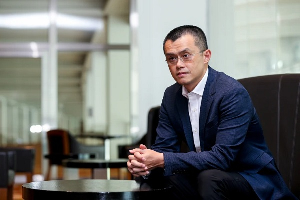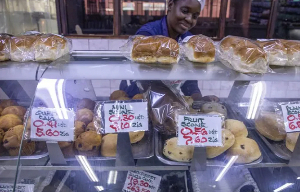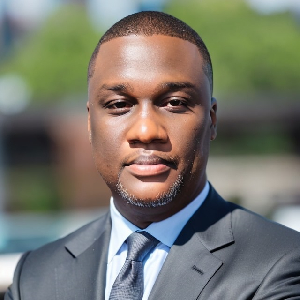- Home - News
- TWI News | TV
- Polls
- Year In Review
- News Archive
- Crime & Punishment
- Politics
- Regional
- Editorial
- Health
- Ghanaians Abroad
- Tabloid
- Africa
- Religion
- Election 2020
- Coronavirus
- News Videos | TV
- Photo Archives
- News Headlines
- Press Release
General News of Monday, 28 October 2002
Source: The Statesman
New pension plan for all
Aware of the frustration and limits associated with attracting foreign investors to patronise an economy which may be better described as seemingly non-viable rather than developing, the government of Ghana is in the process of introducing a new system which will encourage more Ghanaians to buy into a pension fund that will itself be used as a venture capital fund for the long-awaited economic lift-off.
The Statesman can exclusively reveal that the fund, code-named Long-Term Savings Tied to Retirement, is at the heart of the government’s vision for wealth creation. Once approved by Parliament, it will be launched with an aggressive nationwide campaign to make it a success as the benefits to both the nation, in terms of its capitalisation potential, and to the contributor, in terms of dividends and retirement income, would transcend into putting our quest for development in overdrive.
Aware of the frustration and limits associated with attracting foreign investors to patronise an economy which may be better described as seemingly non-viable rather than developing, the government of Ghana, is in the process of introducing a system which will encourage more Ghanaians buy into a pension fund that will itself be used as a venture capital fund for the long awaited economic lift-off.
The objective is to get as many Ghanaians as possible to own a share of the nation’s potential wealth and to invest in their old age, simultaneously. The motive behind the fund is to expand the pool of long-term savings and the creation of vibrant and deep capital markets necessary to stimulate the economy and fund the creation of wealth.
It is a tried and tested system, the success of which has been emulated by advancing developing economies worldwide, especially in the Far East and the Americas. Just last week, for example, the government of Thailand agreed to co-invest with the country’s Government Pension Fund (GPF is equivalent to our SSNIT pension scheme) under a scheme called the Long-Term Investment Fund.
The aim of setting up the fund is to buy listed shares in the Stock Exchange of Thailand. GPF, the $3b pension fund patronised by one million Thai workers, will provide 2b Baht ($44.8m) towards the Long-term Investment Fund, with the Thai government providing 4b Baht towards the fund. This is a clear case of a government taking the initiative to create an investment pool to boost the nation’s economy.
Here, in Ghana, the government is even looking to go a step further by incorporating those who patronise the “Susu” and “Nnoboa” saving schemes under SSNIT Tied to Retirement scheme.
This would ensure that even those within the informal sector could look forward to their old age with the assurance and security provided by pension. Meanwhile, their accumulative savings would feed the industrial growth of the nation. In economic terms, the scheme may be described as one of self-satisfying patriotism.
India has introduced a similar scheme for her 314m workers. In 1991, 34m workers (23m of them in the private sector) were covered by pensions. Today, up to 42m people have a pension plan, largely due to the introduction of Individual Accounts.
To promote universal patronage, thousands of Points of Presence are littered all over the country where anyone can go in to register and make their contributions.
The widespread practice of long-term savings in other economies around the world indicates the universal recognition that capital investment is an up-front sacrifice that subsequently amplifies production and consumption. Thus, despite the small size of their income, thousands of ordinary citizens in countries as diverse as USA, Mexico, India and Thailand are taking up pension plans.
The greater the capital stock an economy has, the more production it can generate. Hence the more of a surplus over subsistence that it can raise to invest in even more capital stock.
While, here in Ghana, we may be far from reaching the stage whereby capital and hence output will keep on growing through re-investment, the government’s intention is a strong signal of the need to revolutionise our attitudes toward venture capital investment.
The presidency’s penchant to travel abroad has been defended by President Kufuor and others as a necessary initiative to promote Ghana and attract inward investment. While it may be accepted that capital import can rescue Ghana from this circular trap which has been so far frustrating the nation’s efforts to go for growth, even the US Treasury Secretary, Paul O’Neil, during his visit to Ghana, was quick to remind Ghanaians that they cannot build the nation’s economy by relying heavily on capital inflow from abroad.
This makes the idea of a Long-term savings Tied to Retirement an interesting one to study and pursue, especially as it also looks to rope in those in the informal sector who may otherwise be excluded from such a project.
For the sceptics, the case of Elecktracpo in Mexico attests to what can be achieved. Elecktrapo is a new bank, owned by the great Salinas Pliego family business chain (which also owns Mexico’s TV Aztec).
Until its recent elevation to full banking status, Elecktracpo was for a long time in the lending business, extending credit to lower class consumers shut out from the traditional bank loans by high cost and stringent formalities through its appliance outlets littered across Mexico.
Just last week, Elecktracpo sought a permit to operate the lucrative business of administering private pension funds.
In 1998, the Mexican government launched the Afore system- a long-term scheme for retirement savings and savings for a down-payment on a government-subsidized house. Afore funds are invested in government bonds (five years and more) and corporate bonds- as loans for companies.
After only four years, 28m Mexicans are now registered on the scheme, making monthly contributions through payroll deduction plans. Contributors are free to choose which bank to administer their Afore funds and the banks compete ruthlessly for Afore customers, since they make good money off the commissions they charge to administer the funds.
Today, the success of Afore is evidenced by its size, 579b pesos ($58b), equivalent to 10 per cent of Gross Domestic Product. The figure is up by 23.5 per cent from July 2001 in inflation adjusted terms, indicating the fund’s tendency for rapid growth.










